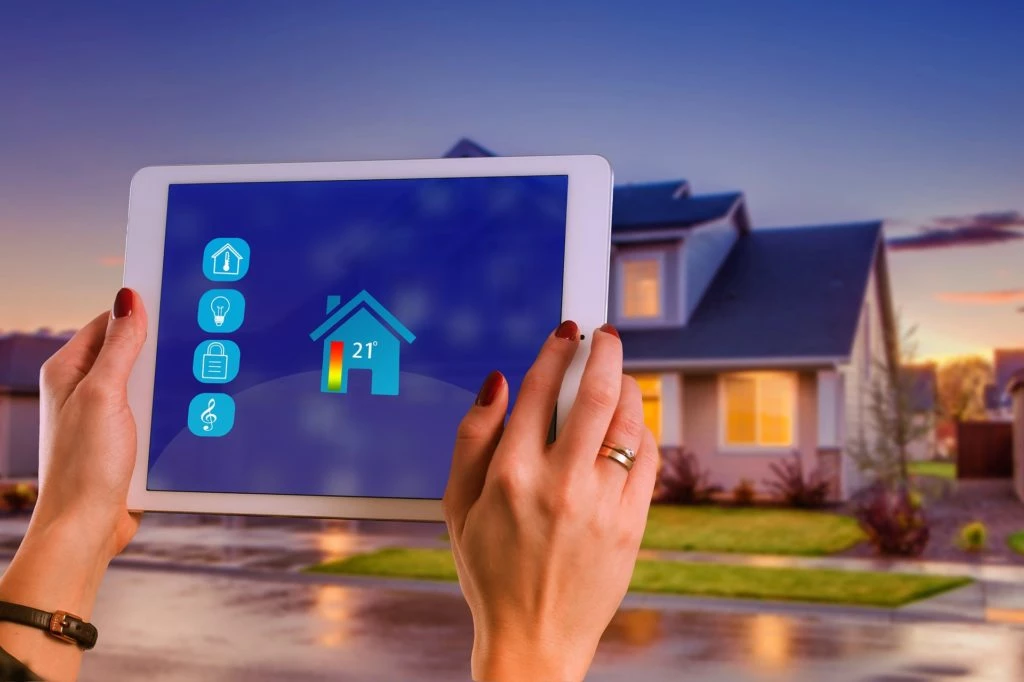
Our security technicians in Chicago get asked this question a lot: What exactly is home automation? And what does it have to do with smart homes?
Here’s the answer: home automation is a feature of the modern smart home whereby residents can automate specific tasks around the home.
Some examples of home automation include:
- A home’s lighting turning on and off automatically according to a schedule set by the homeowner
- A home’s thermostat “learning” your routine and managing temperatures according to when you’re home or away
- A door which locks automatically after a set number of seconds
Pretty simple, right? Home automation makes our lives easier by automating tasks we do every day. That’s the jist of it, anyway. There’s a lot more to home automation than just automating certain tasks around the home.
Our goal with this article is to give Chicago homeowners a deeper understanding of home automation, without overwhelming them with technical details.
We’ll be covering:
- How home automation works
- How home automation fits into the bigger picture of a smart home
- What devices and systems can be automated in the modern smart home
By the way. If you have a question about home automation at any point during this article, the team at Alert Protective is happy to answer it for you.
Just give us a call at (855) 433-6700, or contact us online to schedule a free consultation with one of our expert security and smart home technicians.
How does home automation work?
Home automation is pretty simple on the surface. Homeowners input the schedule they want a device or system to adhere to. And that device or system will follow the schedule until the homeowner says otherwise.
The next question then is, how do homeowners input schedules for each device? As it turns out, this is also easy to accomplish. Although it works in a few different ways:
Manufacturer default settings
Devices like smart locks and smart garage doors may not need direct input from the homeowner. They automatically lock or close after a predetermined time frame has elapsed.
This is determined by the manufacturer initially. But they can easily be changed by the homeowner later, either on the device itself or through one of the following methods below.
Smartphone applications
Most automated devices are connected devices. In other words, you can manage their schedules via an app on your smartphone or other smart device.
When paired with a cellular connection, you can manage the schedules of all your home’s devices directly from your smartphone, even if you’re out of town.
Voice assistants
It’s easy to give commands to your automated devices with voice assistants such as Google’s Home Mini or Amazon’s Echo. Today’s smart devices seamlessly integrate with and accept commands from voice assistants.
AI and cloud-learning
With some technologies, you don’t even need to input a schedule. The device learns it by keeping tabs on when you come and go.
Google’s Nest is an example of a “learning” thermostat that aggregates data from your home and other homes and adjusts temperatures at certain times of the day to save homeowners money.
How does home automation fit into a smart home?
You may have heard the terms “home automation” and “smart home” used interchangeably when talking about connected homes. That’s not exactly how it works.
We like to call home automation a “feature” of smart homes. That’s because home automation itself doesn’t encompass every aspect of what a smart home can do.
Home automation is just one part of the smart home ecosystem. And the smart home ecosystem is vast, covering many new technologies such as:
- Home automation: The ability to set schedules for many devices around your home.
- Connected appliances: This encompasses smart appliances. For example, refrigerators that tell you when your milk is running low. Or toasters that remember how you like your toast.
- Remote access: A feature whereby a homeowner can manage lighting, entertainment systems, security systems and more from their cellular devices.
- Smart sensors: Devices that notify you or a monitoring agency in the event of fire, CO, flooding, a break-in and other emergencies.
What devices and systems can be automated?
Dozens. At the time of this writing, maybe hundreds. More devices and systems are becoming home-automation capable every day.
And that’s a lot of work for homeowners, who need to sift through all of these devices and find the ones that make the most sense for them and their homes.
The best way to tackle this question is to break down automation-ready devices and systems by two types: security and home convenience.
Security
- Smart locks
- Smart garage doors
- Outdoor and indoor lighting
- Indoor and outdoor security cameras (automated recording and storage)

Home convenience
- Appliances (refrigerators, dishwashers, washers and dryers, coffeemakers, etc.)
- HVAC systems and thermostats
- Entertainment systems such as smart TVs and sound systems
Want a professional’s take on the latest home automation devices?
The world of smart homes and home-automation-enabled devices is confusing. Having a guide to show you around this brand new technology can be incredibly helpful.
Alert Protective has been installing home-automation-ready security systems and smart home devices for decades. To learn more about how to upgrade your home into a fully-automated smart home, give us a call at (855) 433-6700, or schedule a consultation online with a smart home and security expert.
Now you can pair your home automation system with our DIY services today!